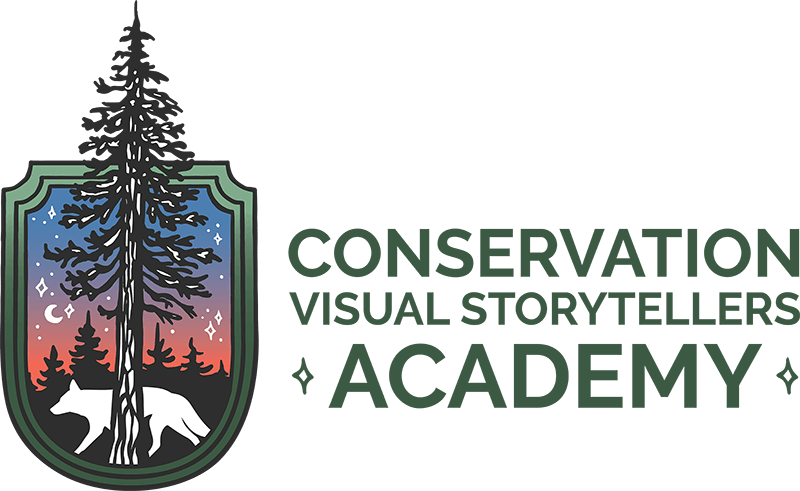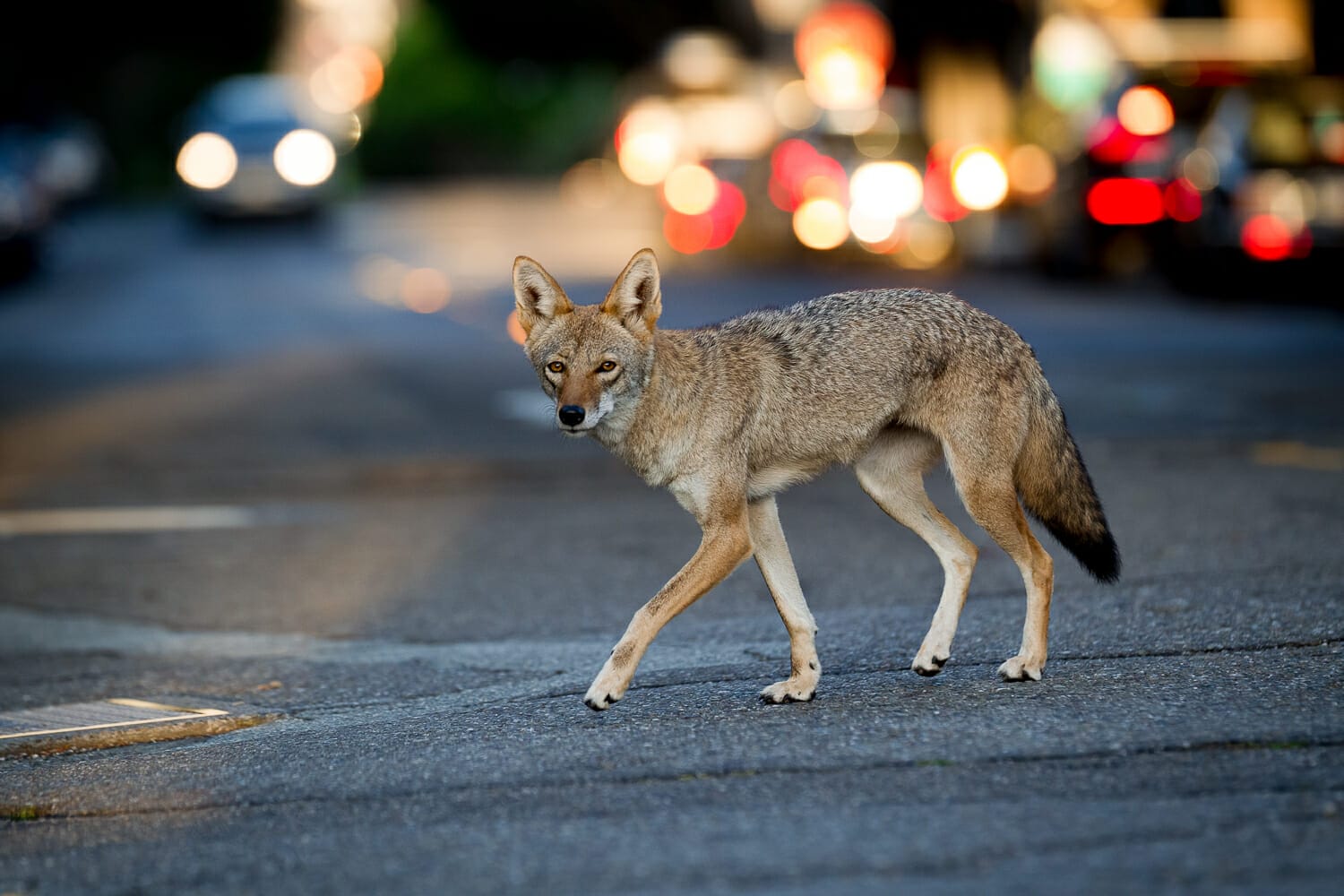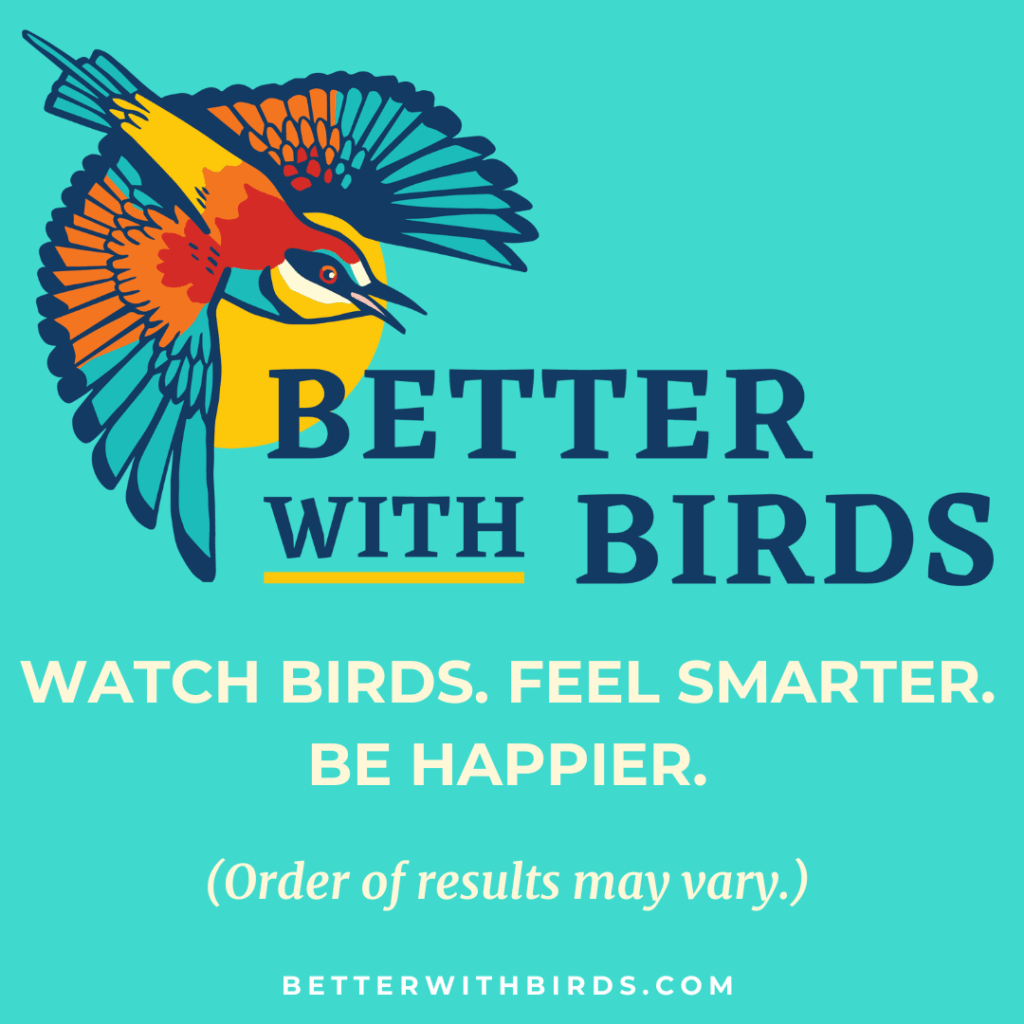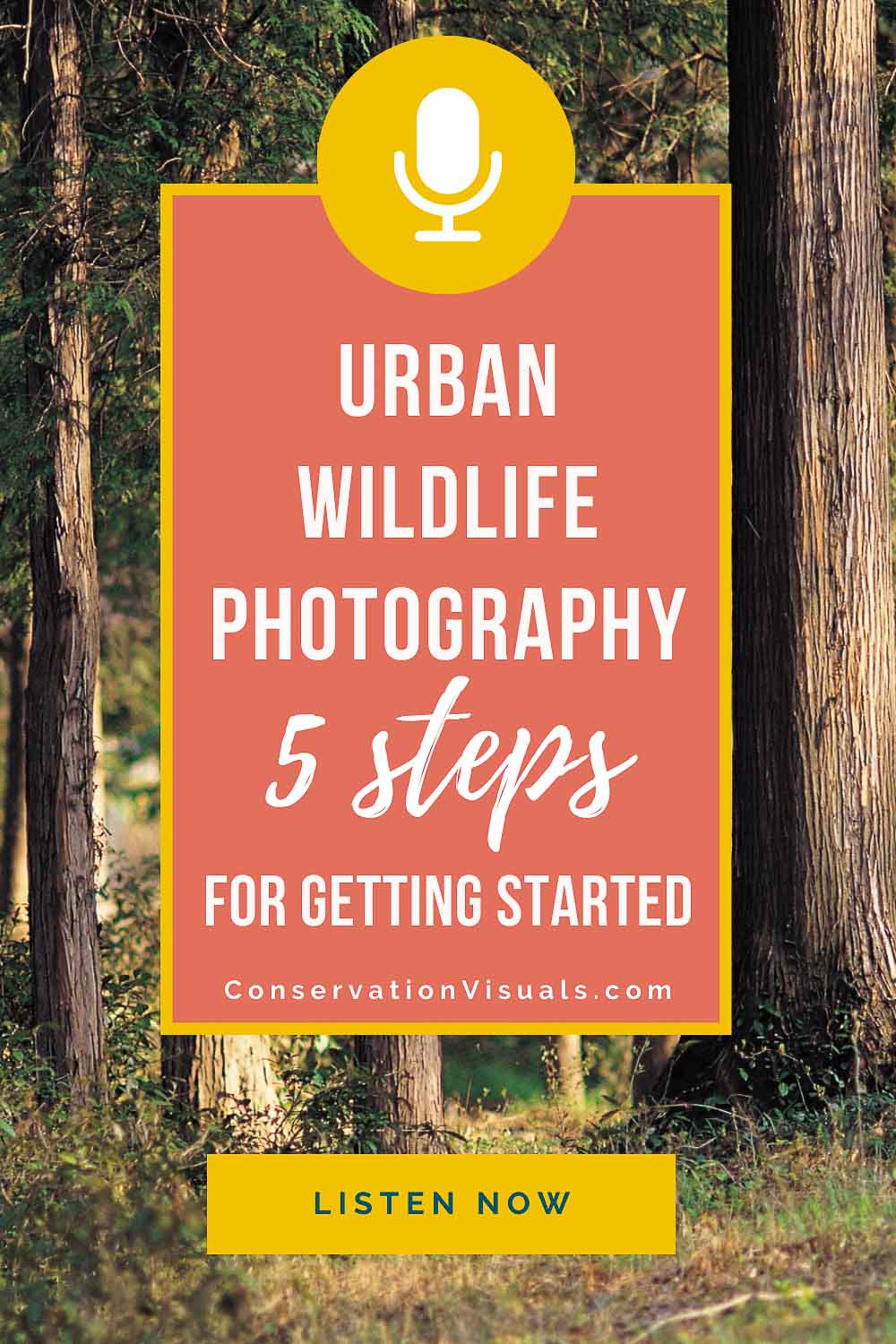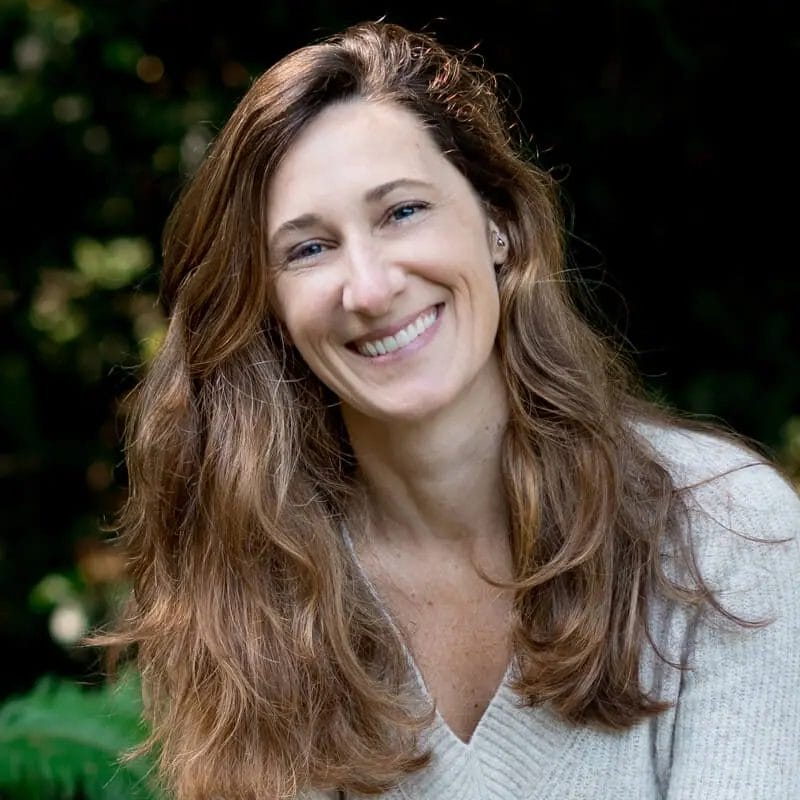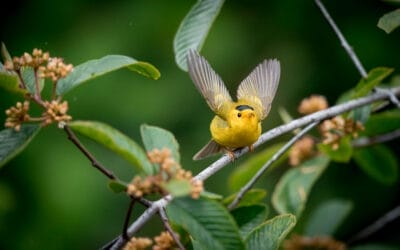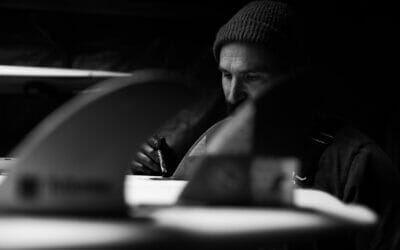When you think of a conservation photographer, do you think of someone who travels to far off locations, photographing rare species and untamed habitats?
Well, some of the most important conservation work is being done in the heart of cities.
How you can make an impact for nature in your city
Did you know that you have the power to shape how a city is designed? It’s true! And you can be part of designing a city that supports people and wildlife; both the bustle of human culture and the busy interconnected web of a healthy ecosystem. And you can accomplish this through photography.
We can be catalysts for critical conservation efforts without ever leaving the concrete canopy of an urban jungle. Indeed, this rough and rugged habitat can be one of the most important places to focus your conservation efforts, especially if you are a nature photographer who is aspiring to be a wildlife conservation photographer.
When you think of a conservation photographer, you might picture someone venturing into remote locations, capturing rare species and untamed habitats. While many conservation photographers do travel far and wide, there’s a whole world of important work to be done closer to home. Urban areas, with their unique blend of natural and man-made environments, offer incredible opportunities for wildlife conservation photography. Let’s dive into why this niche is so crucial and explore five steps to get you started on your own urban conservation photography project.
Why Urban Conservation Photography Matters
Conservation photography isn’t limited to the wilds. Cities and suburbs, with their complex ecosystems, are vital areas for conservation efforts. Roughly 63% of the U.S. population lives in urban areas, a figure that’s expected to grow to two-thirds by 2050. Globally, the number of mega-cities with populations exceeding 10 million is set to increase, impacting countless species as urban sprawl expands.
Urban habitats are constantly evolving, with species adapting to new environments. These areas can support a surprising diversity of wildlife, sometimes even more than pristine natural habitats. For instance, suburban areas often host a higher diversity of bird species than city centers or wild areas, as noted in John Marzluff’s book Suburdia. Conservation photographers can play a crucial role in highlighting these dynamics and advocating for more wildlife-friendly urban planning.
Inspiring Examples of Urban Conservation Photography
Suzi Eszterhas and the Santa Rosa Rookery
In Santa Rosa, California, a small stretch of eucalyptus trees in a median hosts hundreds of nesting Black-crowned Night-Herons, Snowy Egrets, and other birds. This urban rookery has sparked controversy among residents due to the noise and mess. However, conservation photographer Suzi Eszterhas has documented the softer side of the situation, including volunteers rescuing fallen chicks and schoolchildren learning about the birds. Her work underscores the importance of understanding and protecting urban wildlife.
Steve Winter and Mountain Lion P-22
Steve Winter’s iconic photo of Mountain Lion P-22 in Griffith Park, Los Angeles, brought global attention to the challenges faced by urban wildlife. This image helped galvanize support for a wildlife overpass across U.S. 101, which would reconnect fragmented habitats. The project, spearheaded by the National Wildlife Federation’s Beth Pratt Bergstrom, illustrates how powerful images can drive conservation efforts.
Krista Schlyer and the Anacostia River
On the East Coast, Krista Schlyer’s project on the Anacostia River in Washington, D.C., highlights the river’s recovery from centuries of pollution. Her photographs have amplified efforts to clean up toxins and rebuild the city’s sewage system, demonstrating how local conservation work can lead to significant environmental improvements.
Getting Started with Urban Conservation Photography
Step 1: Get to Know Your City
Explore local green spaces, golf courses, cemeteries, marinas, and even irrigation canals. Wildlife often seeks out these areas for shelter and food. Understanding where animals live in your city will help you uncover unique stories and projects.
Step 2: Embrace Diverse Storytelling
Urban conservation photography often goes beyond classic wildlife portraiture. Be prepared to photograph human-wildlife interactions, conservation challenges, and the impacts of urbanization. This broader approach will enrich your storytelling and highlight the complex relationships within urban ecosystems.
Step 3: Choose Your Story
Decide what kind of story you want to tell. This could range from documenting a single animal’s life to raising awareness about a local conservation issue. Look for inspiration in citizen science projects, news articles, and scientific research. The North American Nature Photography Association’s citizen science database is a great resource for finding potential stories.
Step 4: Collaborate Wisely
Consider partnering with local organizations, research teams, or community groups. Collaboration can provide access to resources and help you reach a broader audience. Before you start, discuss the terms of your collaboration, including image usage, documentation boundaries, and the duration of your project. Clear agreements will help ensure a smooth partnership.
Step 5: Recognize Your Superpower
As a conservation photographer, you have the power to influence how people perceive and interact with urban wildlife. Think about the impact you want to make with your images. Do you want to highlight positive coexistence, address conflicts, or support scientific research? Your passion and vision will guide your work and inspire others to take action.
Conclusion
Urban conservation photography is a powerful and necessary field. As cities continue to grow, the role of photographers in shaping how we coexist with wildlife becomes even more critical. By exploring your local environment, embracing diverse storytelling, choosing meaningful stories, collaborating effectively, and leveraging your unique perspective, you can make a significant impact.
You’ll Learn
- Examples of powerful conservation photography from cities across North America
- 5 first steps to take when you’re starting an urban conservation photography project including:
- 1. Get to know your city
- 2. Open yourself up to pursuing stories that are different from what you’ve normally been photographing
- 3. Decide what kind of story you want to tell
- 4. Decide very carefully who you are collaborating with
- 5. Consider how you’ll put your superpower of universal language to work
Resources Mentioned
- River of Resiliance by Krista Schlyer
- When Mountain Lions are Neighbors – by Beth Pratt Bergstrom
- How rats became an inescapable part of city living – photographs by Charlie Hamilton James
- Steve Winter
- Welcome to Subirdia – by John Marzluff
- Bane—or Blessing? How an urban rookery in California stirs both distress and delight
